Leopard gecko morphs are the diverse color variations of the different lines (breeds) of leopard geckos developed by breeders of these pets. Leopard geckos are among the most popular pets in the world today. Of course, the leopard gecko has earned this success in part because of such qualities as ease of care, friendliness, understandability and cleanliness. But we still pay a lot of attention to appearance. Therefore, the variety of bred and pleasing to our eye color variants is sometimes a decisive factor in choosing a pet.
Currently there are hundreds of different hybrid and color lines of leopard geckos, bred by breeders and well-trained amateurs who strive to create new, popular morphs of leos. Versatile information on the Internet about care, breeding and genetics has led to the formation of a community of experts. They have even created a leopard gecko morph calculator to help beginners understand the variety of genetic variations.
The Many Morphs of the Leopard Gecko
Leopard geckos are some of the most popular pet lizards, and for good reason. They are relatively easy to care for, have docile temperaments, and come in a stunning array of colors and patterns called morphs. With over 100 different morphs to choose from, there is a leopard gecko out there for every enthusiast. Let’s take a look at some of the most common leopard gecko morphs available.
What is a Morph?
A morph simply refers to the different variations that can occur within a species due to genetic mutations. Morphs affect the gecko’s size, color, pattern, eye color and more. Some morphs occur naturally while others have been selectively bred by gecko enthusiasts.
Normal
The normal or “wild type” morph has the iconic yellow body with dark brown to black spots. This is what leopard geckos look like in their natural habitat and is generally the least expensive morph. Normal morphs can vary quite a bit in exact coloration and patterning.
High Yellow
Similar to normal but with a brighter yellow body and fewer spots High yellows really show off the contrast between the vibrant yellow and dark spots
Albino
Albino morphs lack the dark pigment melanin, resulting in much lighter coloration. However, they are not completely white. Common varieties include Tremper albinos (yellow, orange or peach bodies with yellow spots), Rainwater albinos (light peach with pinkish bands), and Bell albinos (lavender with dark spots). Red eyes are common.
Patternless
As the name suggests, these geckos lack any spots or bands. Most are a solid yellow, orange or peach color. They are born with some patterning that fades as they mature.
Mack Snow
This popular albino strain has a white or very light yellow body with darker gray or black bands. The high contrast pattern is visually striking.
Blizzard
Blizzards take the patternless look to the extreme with no markings on a white, pink, yellow or lavender body. Blazing blizzards add in albino genetics.
Giant
Giant morphs are exactly what they sound like – much larger than average leopard geckos. Giants and super giants are the largest variants.
Striped
Bold stripes run down the length of the body. Stripes can be black, brown or even reddish in color.
Hypo
Short for hypomelanistic, these morphs have reduced dark pigment. Hypos have very few spots, while super hypos have no spots at all.
Melanistic
The opposite of hypos, melanistics have increased dark pigment. Mostly black but may still show some patterning.
Carrot Tail
Bright orange or reddish tail coloration, ranging from just the tip to the entire tail.
Now let’s go over some popular combo morphs:
RAPTOR
This combination morph mixes patternless, albino and hypo genes to create a red-eyed gecko with a solid orange body and no markings.
Eclipse
Eclipses derived from the Mack snow lineage have striking solid black eyes rather than the normal striped appearance.
Enigma
This morph combines polygenic traits to create a unique mottled pattern and white tail. No two enigmas have the same exact look.
Diablo Blanco
A mix of blizzard and RAPTOR genetics, these geckos are entirely white with bright red eyes. A stunning look.
The many leopard gecko morphs offer a diverse palette to choose from. Common low-cost varieties like normal, high yellow and albino can make great starter pets. Meanwhile, rare designer morphs with price tags in the hundreds provide exciting goals for seasoned breeders and collectors. No matter your budget or experience level, you are sure to find a leopard gecko morph that is perfect for you!

Super Hypo Tangerine (SHT)

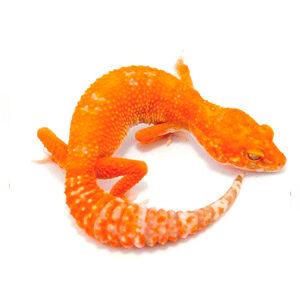
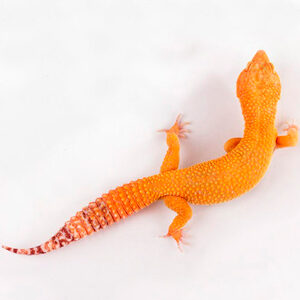
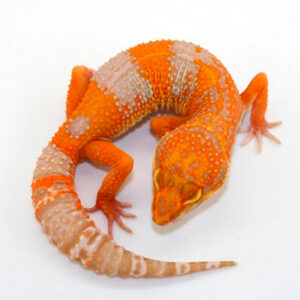
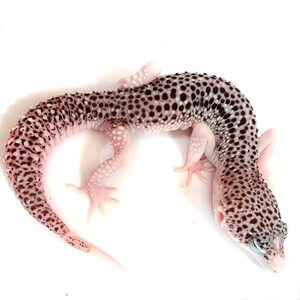

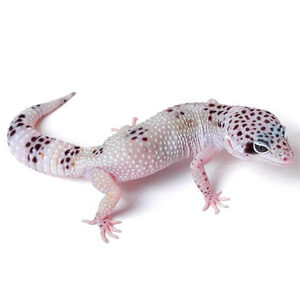
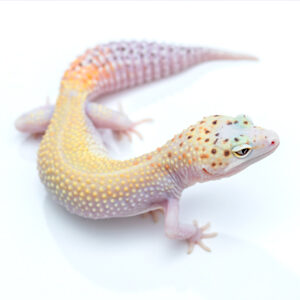
TOP 5 BEST leopard gecko MORPHS | BEGINNER edition
FAQ
What is the most common leopard gecko morph?
-
-
These geckos lack black pigment and dark markings, resulting in a variety of colors and patterns.
- Tremper Albino: One of the most popular albino morphs.
- Bell Albino: Another popular albino morph with pinker eyes and a brighter skin tone compared to Tremper Albino.
- Rainwater Albino: A third popular albino morph with darker eyes and pigment.
- Tremper Albino: One of the most popular albino morphs.
-
These geckos have no patterns, but can come in various colors like purple, brown, yellow, and white.
-
These geckos have a bright orange coloration.
-
Jungle geckos have been bred to have an assortment of exotic patterns and colors, including stripes, spots, and other patterns.
What leopard gecko morphs to avoid?
Enigma and Lemon Frosts are the main morphs that are the “super bad ones”, however there are a few more that might get the axe. Enigma:The issue with Enigmas are the Neurological issues (balance issues)- this can cause them to wobble, circle, death roll and stargaze.
What is the most sought after leopard gecko morph?
Black Nights are the most expensive morph. They’re generally quite inbred and good quality stock usually goes for over a thousand dollars per animal. It’s not a gene, it’s line breeding, so if you outcross them it dilutes their color pretty significantly many times. Besides that, there are no rare morphs.
Is it better to have 1 or 2 leopard geckos?
-
Natural Behavior:Leopard geckos are solitary creatures in the wild and don’t typically live in groups.
-
Territoriality:Even if you have two females, they can become territorial and aggressive, leading to fights or bullying.
-
Stress and Aggression:Housing multiple geckos together can cause stress and aggression, especially if resources are limited or they have different needs.
-
Disease Risk:Multiple geckos in the same enclosure increase the risk of disease and parasite spread.
-
Difficulty in Providing for Individual Needs:Each gecko has different needs and requirements, and it can be difficult to ensure that all needs are met when multiple geckos are housed together.
-
Potential for Injury:Fighting and bullying can lead to injuries, including tail biting or even death.
-
Exceptions:While cohabitation is generally not recommended, some keepers have successfully kept females together, but it’s still risky, and it’s best to err on the side of caution.
-
Always supervise introductions:If you choose to cohabitate, always supervise the introduction and separation of geckos to ensure that they are not fighting.
What are leopard gecko morphs?
Leopard gecko morphs are variations of the same species of lizard, produced by selective breeding over many generations. They come in different colors, shapes, eyes, and patterns.
Are there different types of leopard geckos?
There are also TONS of different types of leopard geckos (most commonly called morphs), so every reptile owner is sure to find a variation that they love. …but what are morphs? A “leopard gecko morph” is simply a variation in size, coloring, pattern, or other physical features of a leopard gecko. Some morphs are caused by random mutations.
What are some examples of leopard geckos?
Some examples of different types of leopard geckos include the baldy morph, the Carrot tailed, and the Diablo Blanco. Leopard geckos with different eye colors and shapes than normal species are referred to as morphs. Striped leopard geckos are recognizable by the stripes on their backs. The colors of the geckos and those of the stripes can vary greatly.
Which leopard gecko morph is the most popular?
One of the most popular leopard gecko morphs, Mack Snow, was first bred by John and Amy Mack. Mack Snows lack bright colors such as orange and bright yellow. Their base color is white or pale yellow, with black spots or bands. Their color often darkens with age. While Mack Snow is a heterozygous mutation, Super Snow is its homozygous version.
What is a stripe leopard gecko morph?
The Stripe leopard gecko morph is known primarily for its distinct body pattern. Instead of the usual leopard spots, these lizards have a single solid stripe running from the neck’s base down to the base of their tail!
How do you identify a leopard gecko morph?
Four physical traits are used to distinguish leopard gecko morphs: 1) color, 2) eye, 3) pattern, and 4) size. You need also to know that one cannot accurately determine a morph based solely on its physical appearance alone – not all genes manifest. Moreover, some morphs are known to cause life-threatening health issues.
